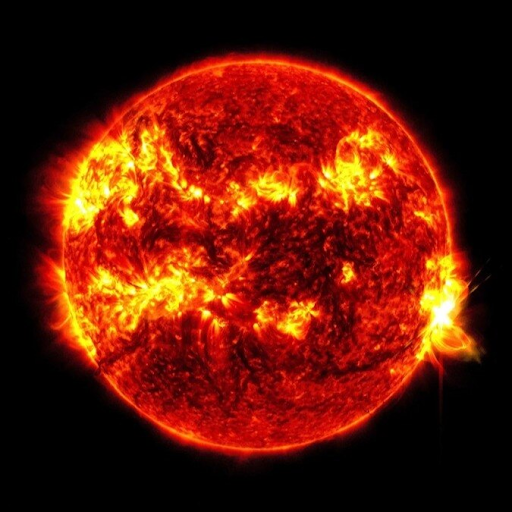A hidden solar cycle, possibly linked to longer-term patterns like the Gleissberg cycle (~80-100 years), may be emerging, influencing solar activity beyond the standard 11-year cycle. Increased solar activity could drive more extreme space weather—geomagnetic storms, solar flares, and coronal mass ejections—over the next 50 years. While this poses risks, such as satellite damage, power grid disruptions, and communication issues, it’s not inherently catastrophic. Enhanced space weather can also yield benefits: stronger auroral displays, improved ionospheric conditions for certain radio communications, and opportunities to advance solar physics and space weather forecasting. Mitigation strategies, like hardening infrastructure and improving early warning systems, can offset risks. The net impact depends on preparation and adaptation.
Here's a breakdown of the key points and some additional context:
The Gleissberg Cycle:
- This is a long-term cycle, approximately 100 years, that modulates the intensity of the more well-known 11-year solar cycle (Schwabe cycle), which is characterized by the ebb and flow of sunspots.
- Research suggests that the Gleissberg Cycle might have reached a low point, indicating that the upcoming solar cycles could be more active than the recent ones.
More Active Solar Cycles and Space Weather:
- Increased solar activity means more sunspots, which are often associated with solar flares (intense bursts of electromagnetic radiation) and coronal mass ejections (CMEs) – large expulsions of plasma and magnetic field from the Sun.
- These solar events can lead to increased space weather phenomena near Earth, including geomagnetic storms, solar radiation storms, and radio blackouts.
Potential Downsides of Extreme Space Weather:
- Disruption of Technology: Geomagnetic storms can induce currents in power grids, potentially causing blackouts and damage to transformers. They can also interfere with radio communications, GPS signals, and satellite operations, including communication, navigation, and Earth observation satellites.
- Radiation Hazards: Solar radiation storms can increase radiation levels in space, posing risks to astronauts and even airline passengers flying over polar regions. They can also damage satellite electronics.
- Atmospheric Drag: Increased solar activity can heat and expand Earth's upper atmosphere, increasing drag on low-orbiting satellites and potentially shortening their lifespan.
Why More Extreme Space Weather Might "Not Be a Bad Thing" (According to the Article):
- Atmospheric Expansion and Particle Density: The article mentions that increased solar activity heats and expands Earth's atmosphere. This expansion can cause high-energy protons trapped in Earth's magnetic field (Van Allen radiation belts) to collide with the atmosphere and drop out, leading to a temporary decrease in their density. So, while there are more CMEs during active solar periods (which are a source of these trapped particles), the increased atmospheric drag can counteract this effect for a while.
- Auroras: More active solar cycles typically result in more frequent and intense auroras (Northern and Southern Lights), which are a spectacular visual manifestation of space weather.
General Information about Solar Cycles and Space Weather:
- Solar Cycle: The Sun's magnetic activity follows an approximately 11-year cycle. Solar minimum is a period of low sunspot activity, while solar maximum is a period of high activity. We are currently in Solar Cycle 25, which began in December 2019 and is expected to peak around mid-2025. Some predictions suggest it might be more active than the previous cycle.
- Space Weather: This term refers to the conditions in space that can affect Earth and its technological systems. It is driven by the Sun's activity.
- Geomagnetic Storms: These are disturbances in Earth's magnetosphere caused by solar wind and CMEs interacting with Earth's magnetic field. They can cause auroras, disrupt radio communications and GPS, and induce currents in power grids.
- Solar Flares: Sudden bursts of energy from the Sun that can affect Earth's ionosphere, leading to radio blackouts.
- Coronal Mass Ejections (CMEs): Large expulsions of plasma and magnetic field from the Sun that can travel through space and impact Earth's magnetosphere, causing geomagnetic storms and solar radiation storms.
- Solar Radiation Storms: These involve high-energy particles from the Sun that can reach Earth and pose radiation risks.
In Conclusion:
While an awakening Gleissberg Cycle might lead to more intense solar activity and potentially more frequent and severe space weather events over the next 50 years, the effects are complex. Some phenomena, like the temporary clearing of high-energy particles due to atmospheric expansion, might offer a silver lining. However, it's crucial to continue monitoring and understanding solar activity to mitigate the potential risks to our technology and infrastructure. Predicting the exact intensity and impact of future solar cycles and space weather events remains an active area of research.


